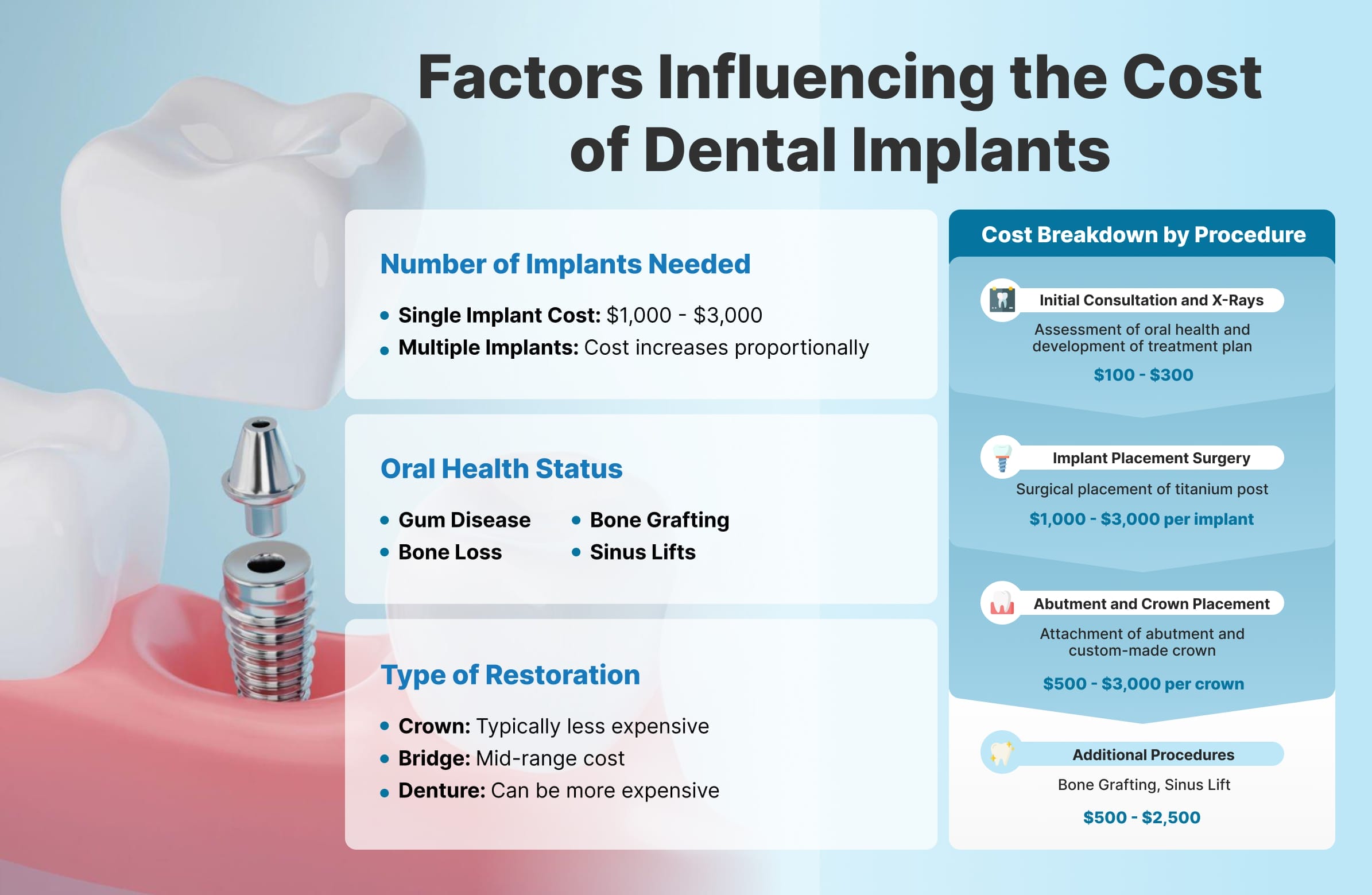Dental Sense - Truths
Dental Sense - Truths
Blog Article
Little Known Questions About Dental Sense.
Table of ContentsAbout Dental SenseThe Definitive Guide for Dental SenseThe 5-Second Trick For Dental SenseDental Sense Things To Know Before You Get This
are clinical gadgets operatively dental implanted into the jaw to restore an individual's ability to eat or their appearance. They give support for artificial (fake) teeth, such as crowns, bridges, or dentures. When a tooth is lost due to injury or illness, a person can experience complications such as quick bone loss, faulty speech, or changes to eating patterns that result in discomfort.Dental dental implant systems consist of a dental implant body and oral implant joint and may additionally consist of a joint addiction screw. Dental implant vs bridge. The oral implant body is surgically put in the jawbone instead of the tooth's origin. The dental implant abutment is normally affixed to the dental implant body by the abutment fixation screw and extends via gums into the mouth to sustain the connected artificial teeth
(http://www.place123.net/place/dental-sense-miami-united-states)Structure of The Dental Implant System choosing dental implants, talk to your oral service provider regarding the prospective benefits and threats, and whether you are a prospect for the procedure. Things to think about: Your general health and wellness is a vital variable in determining whether you are an excellent prospect for oral implants, the length of time it will certainly take to recover, and the length of time the implant may remain in location.
Cigarette smoking might influence the recovery process and reduce the long-term success of the dental implant. The recovery process for the dental implant body may take a number of months or longer, throughout which time you commonly have a short-lived joint instead of the tooth. the dental implant treatment: Very carefully adhere to the dental health instructions offered to you by your oral service provider.
The Ultimate Guide To Dental Sense
Implant failure can cause the need for one more procedure to deal with or change the dental implant system. Brings back the capacity to eat Brings back cosmetic appearance Helps keep the jawbone from reducing as a result of bone loss Maintains the health and wellness of the surrounding bone and gum tissues Helps keep surrounding (close-by) teeth stable Boosts lifestyle Damage to bordering natural teeth throughout implant positioning Injury to the surrounding tissues during surgical treatment, such as sinus perforation Injury throughout surgery (for instance, crack of surrounding jawbone) Insufficient feature, such as seeming like the teeth do not attack with each other normally An experience that the tooth is loosened or twisting in position resulting from an abutment screw loosening up Implant body failing (looseness of the dental implant body) because of systemic infection, which may be more probable in patients with uncontrolled diabetes mellitus because of regional infection in bone and gum tissues supporting the dental implant body due to delayed healing, which might be most likely in individuals who smoke Difficulty cleansing the gums around the implant, resulting in bad oral health Untreated periodontal illness Post-surgical pins and needles as a result of nerve impingement or damage Always alert healthcare suppliers and imaging service technicians that you have oral implants before any magnetic vibration imaging (MRI) or x-ray treatments.
FDA is not knowledgeable about any adverse events reported for MRI or x-ray treatments with oral implants. Dental implants systems are typically made from materials that comply with worldwide agreement criteria of the International Company for Standardization (ISO) or ASTM International. These requirements have information of what makes a risk-free product.

An oral implant is a framework that changes a missing out on tooth. With screw-like tools, the cosmetic surgeon inserts a dental implant into the jawbone, and it acts as a support for a synthetic tooth, called a crown.
Dental Sense Things To Know Before You Buy
Some individuals are not qualified for my blog oral implant surgical treatment. It is for oral doctors to operate individuals with: intense illnessuncontrollable metabolic diseasebone or soft tissue disease or infectionIf these problems are solved, an individual can have the surgical treatment. In, dental specialists avoid operating on individuals with: If individuals with any one of the above undergo dental implant surgical procedure, there is a greater risk of the implant stopping working.

Oral dental implant surgical procedure is an individualized process. It's not the same for everyone. Yet the following offers a basic overview of what you can expect your dental expert, dental surgeon, periodontist or prosthodontist to do: Put the dental implant operatively. Provide you time to recover. Attach the post and last crown, bridge or denture.
Next, your doctor will carefully put the oral implant right into your jaw. If your implant is near the front of your mouth, your dental practitioner will make a short-lived tooth for you to use up until you recover.
Dental Sense - Truths
Your provider can tell you what to anticipate in your scenario. Throughout the recovery stage, your jawbone should fuse to the oral implant. This process, called osseointegration, is vital for security and lasting success. This procedure can take anywhere from 3 to 9 months. Sometimes, it may take much longer.
Once your implant heals, your dental practitioner can connect the abutment (small connector post) and your last remediation (crown, bridge or denture). This typically takes concerning one hour to complete and might need a 2nd minor surgery. You should not really feel any kind of discomfort during your dental implant treatment due to the fact that your provider will utilize medicine to numb your periodontals.
Report this page